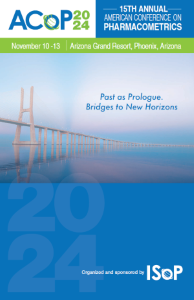Quantitative clinical pharmacology of antibody drug conjugate development: challenges and opportunities
Mechanistic QSP modeling for a deeper understanding of ADC toxicities and combination effects with immunotherapies
Wednesday, November 13, 2024
1:45 PM – 2:15 PM MST
Location: Canyon Ballroom

Katharina Wilkins, PhD (she/her/hers)
Group leader, Principal scientist I, Translational and Systems Pharmacology
Metrum Research Group, Connecticut, United StatesDisclosure(s): No financial relationships to disclose
Speaker(s)
Disclosure(s):
Katharina Wilkins, PhD: No financial relationships to disclose
ADCs are proffered as a means to deliver highly potent, cytotoxic payloads specifically to antigen-expressing tumor cells. While this ‘silver bullet’ concept promises efficacy without the side effects of chemotherapies, off-target tissue disposition of ADCs still causes systemic toxicities that are difficult to predict in preclinical studies. Ultimately, ADC development has been challenged by expensive and disappointing late-stage failures. Even successful ADCs have narrow therapeutic windows and are susceptible to acquired drug resistance, rendering ADC mono-therapy not typically curative in nature. It is an emerging hope that combination treatment of an ADC and a second, orthogonal, modality may improve efficacy while limiting the overall risk posed by exposure to excessive doses of either therapeutic. Here we present two examples illustrating the value of QSP models in ADC clinical development, for predicting tissue disposition and combination effects with immunotherapy agents in patients. We first show that tissue disposition of approved ADCs as predicted by a PBPK QSP model may help to elucidate the origins of several associated toxicities commonly observed in the clinic. This model supported the understanding of successes as well as failures of recently developed ADCs. In a second example, a QSP PKPD model was deployed to anticipate combination effects between an ADC and a T cell engaging bispecific antibody for the treatment of relapsed/refractory lymphoma. By predicting potential anti-tumor synergies, the model can aid in ADC dose selection and scheduling for clinical trial optimization. Given the challenges and uncertainties associated with ADC development, mechanistic insights emanating from QSP modeling can help to de-risk trial design and ultimately improve patient outcomes.

